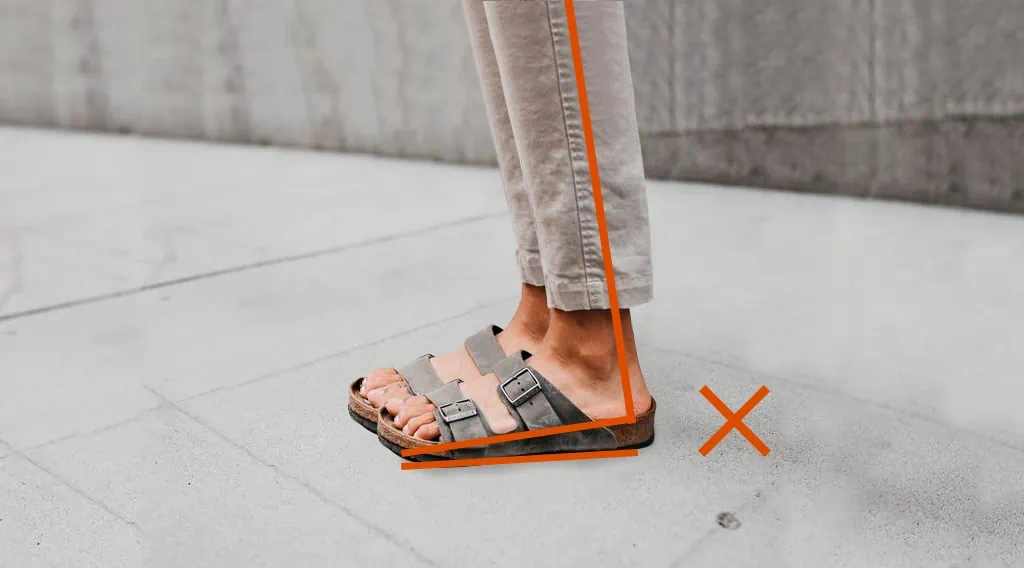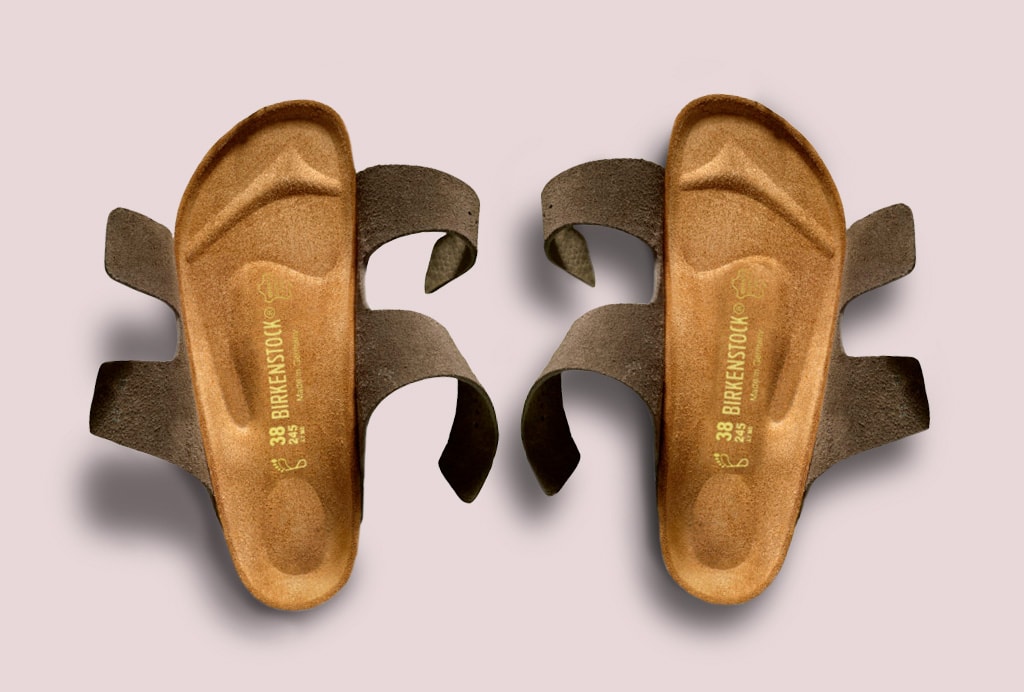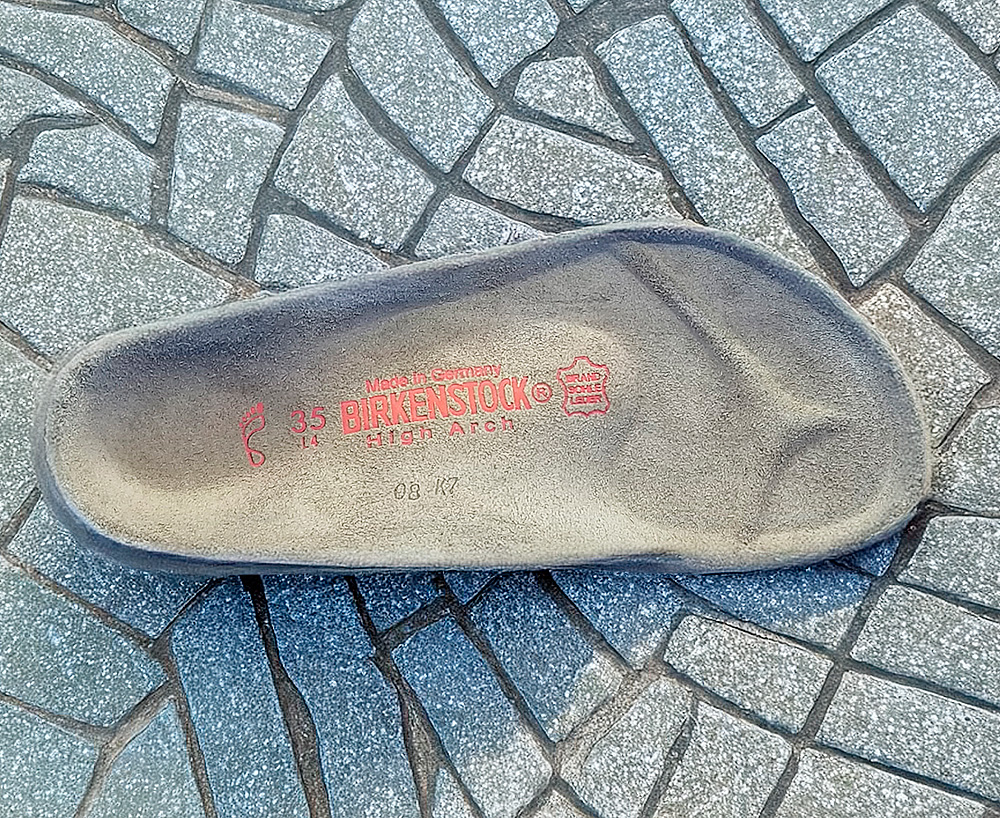In This Article
The #Birkenstocks tag is gaining momentum — it has garnered over 900 million views on TikTok for this hashtag alone. We couldn’t pass by such a rising trend without analyzing its value from a vantage point. In this guide, let’s see the quality of this brand’s clogs for different categories of users.
For those prioritizing natural foot development, we invite you to explore our resources on minimalist footwear and our curated list of recommended brands in that category.
The Birkenstock’s Hype
Worn by the likes of Katy Perry, Kendall Jenner, Dakota Johnson, and Heidi Klum, the distinguished style transformed from a typical type of shoe into a staple of the post-pandemic fashion era. According to Lyst, one of the top spaces for fashionistas to discover new trends, the brand’s clogs were considered the Shoe of the Year in 2022. In its annual report, the team highlighted an ever-increasing popularity range of the style in The Lyst Index, including the rise of Birkenstock-related searches by around 600% in the first half of 2022. In 2025, the momentum of Birkenstock’s Boston Clogs is still high — we share the same opinion as experts at Glamour UK and People.

Are Birkenstocks Worth It?
Depending on your objective, the answer will change:
- These clogs are an aesthetic match for casual and semi-casual outfits — a worthwhile purchase for fashionistas.
- If you aim for shoes that support your foot health, Birkenstocks feature some of the common drawbacks of traditional footwear.
Here are some aspects to help you form your data-driven view of Birks.
| Pros | Cons |
| With wide-toe boxes, you can easily move your toes even in closed-toe clogs. | In the long run, wearing Birks with arch support will reduce your foot muscle flexibility and strength. |
| These shoes are made of natural materials following sustainability principles. | Compared to their first appearance in the market and cheap price tags back then, the current cost can easily be over $155 at a random retailer’s store. |
| They come with adjustable straps. | There is no water resistance potential. |
| Their EVA outsoles are pretty durable, with the dual Jute layer for added moisture-wicking efficiency. | They are not zero-drop shoes (except a few sandal models). |
The style’s basis is usually the blend of such materials as latex and cork, which react to natural body warmth. If you consider ordering open-toe designs for summer, unpleasant odor buildup and foot swelling may become typical problems for you to solve.
Unlike popular alternatives with ankle straps or lace-up closures, Birkenstocks may slip off your feet more easily:
- Slippery bare feet during hot days don’t have the best traction with cork-based surfaces.
- Right out of the box, the footbed is more uniform, which may worsen the issue.
- Your foot doesn’t remain anchored by default, and incorrect sizing with loose straps won’t be helpful.
Disclaimer: This article is not medical advice and is based on our experience and expert opinions. If you have any foot health concerns, we recommend consulting a podiatrist.
We understand the appeal of Birkenstocks, particularly their reputation for eco-friendly and animal-friendly production. However, in our experience with various footwear options, we’ve found other brands that align more closely with foot-health-oriented manufacturing principles — OAKA Derby promotes overall foot health with dress shoe aesthetics and sneakers-like comfort.
Are Birkenstocks Flexible and Lightweight?
No, Birkenstocks are not particularly flexible or lightweight when compared to many other shoe types, especially minimalist footwear.
A typical pair of Birkenstock clogs weighs around 11 ounces. While this isn’t excessively heavy, minimalist shoes (like the Xero Shoes HFS II) can weigh significantly less (e.g., 6.7 ounces). They also don’t offer a full range of motion for your feet. The main reason is their sturdy, cork-based footbeds, which are designed for shock absorption rather than flexibility.

These are designed with footbeds molded to follow the contour of your feet, though they may feel somewhat heavy if you wear them for too long. What’s more, such designs come without secure straps. It requires you to move more carefully and intentionally “increase” the foot grip to avoid any falling, ankle-twisting, or other issues.
Are Birkenstocks Zero Drop?
No, these don’t belong to this category of shoes. In turn, zero-drop shoes provide a flat sole all the way through, from your toes to heel. The target product, however, has a slight heel lift. It may visually elongate your profile, but this design element will negatively affect your musculoskeletal system, leading to improper foot alignment:
- Uneven stress on your hip, knees, and joints overall;
- Persistent sense of discomfort, including tingling and numbness;
- Altered posture, with painful sensations in the lower back;
- Non-typical walking patterns, dictated by Birks rather than natural movement within a full range.

Are Birks Suitable for People with Plantar Fasciitis?
Yes, they can work for men and women suffering from this inflammation. Seek a professional podiatrist’s recommendation to see whether they are suitable in your particular case, given the severity of the condition, lifestyle, etc.


Birkenstocks are famous for their arch support, which can relieve painful sensations:
- A deep heel cup — this peculiarity reduces the strain on foot muscles, stabilizing the heel.
- Broad footbeds — this feature helps spread pressure more uniformly across the foot rather than letting it all focus on the heel.
- Personalized comfort — this orthotic design features cork-based footbeds, which change their shape to match an individual’s foot silhouette in the long run.
Birkenstocks are suitable for light physical activities indoors and outdoors, potentially contributing to the results of your physical therapy. These shoes with thicker soles and arch support can be an addition to your custom-made orthotics, improving your function and reducing pain with minimal risks of side effects.
If you’re still not bothered by Birkenstock’s shortcomings but aren’t happy with the price, check out our list of cheaper alternatives. They look similar and are sometimes more anatomically correct than Birkenstocks.
Don’t overlook the importance of a break-in period for Birks. Don’t wear them all day initially. Use them for shorter periods, letting the footbed mold without overstressing your fascia.
Alternatives to Birkenstock Sandals

Birkenstock’s Boston clogs are stylish and versatile, but modern collections of barefoot models don’t lag. We are happy to introduce you to the natural efficiency of minimalist shoes. They are a fusion of beauty and comfort, resulting in foot stability, strength, alignment, and mobility. Presented in a wide range of shoe types, barefoot solutions are exactly what you need for an unforgettable and comfortable adventure time:
- Ahinsa Sandals — flexible and lightweight shoes, made of eco-friendly materials;
- Unshoes — handmade designs for a tailored result for your comfort and foot health;
- Bedrock Sandals — durable and effective for hiking, river trekking, and other outdoor activities.
Final Thoughts
Birkenstocks aren’t a perfect match for any end-user scenario. They might be helpful for those with special foot conditions (as an additional tool rather than an individual solution), but their values are still more fashion-forward. They are susceptible to humidity and don’t meet the highest standards in terms of proper foot alignment and ground feel. Nonetheless, with the right care, they can be a nice choice for a fancy outing with your friends.
Welcome to the comment section below! We look forward to seeing your experiences with Birks in real life. For more details about barefoot alternatives, check out our blog’s articles!


You really know this subject well! The speed of your site is also impressive. Excellent work—I’m thoroughly impressed.
Thank you!
I have an average arch. For years I’ve worn simple shoes like flip flops, White Mountain sandals, and Roxy Surf Ked-type tennis shoes. I am always barefoot in my home with hard wood floors.
I considered getting a pair of Birk clogs this fall for ease & style. I’m not now! I’m 57 and 5’8 135 lb so no weight problems, I exercize regularly but my hips hurt a lot. I have a slight arch in my lower back.
After reading your article I’m concerned that Birks would do more harm than good. Thank you.
Thanks Peggy! We are glad that our work helps people make the right choice. We wish you good health!
Thanks for sharing. I read many of your blog posts, cool, your blog is very good.
Why do none of the article promoting barefoot shoes talk about the weight of the individual? It is extremely important to note that issues with transitioning to barefoot shoes can be compounded and worsened if you are overweight. Be very very cautious about switching until you get back within your normal weight range or you’ll do more harm than good.
Hello David! We don’t have any validated research on this. Can you refer to reliable sources confirming this information? Our community will thank you. We will definitely update our article if this information is confirmed.
It would be great if you offered more alternatives to Birkenstocks. Thank you
Thanks for your feedback! We have just updated the article and added alternative options for barefoot sandals. You can find even more healthy shoes on our blog! Thanks again
This resource is unbelievable. The radiant data exhibits the manager’s excitement. I’m shocked and anticipate more such astonishing presents.
I don’t quite understand, but thank you)